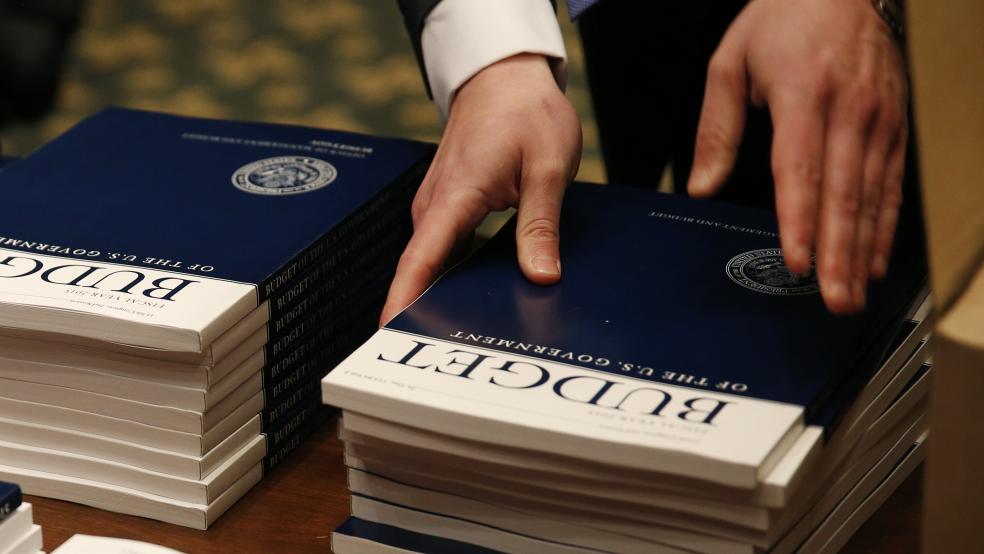Capping a week of touting an improving economic picture, the Obama administration on Friday issued a mid-year budgetary update showing a steadily declining deficit and continued improvement in the economy and jobs picture.
According to the updated budget figures, the fiscal 2014 deficit is now projected to hit $583 billion – nearly $100 billion less than last year’s deficit and $66 billion lower than the deficit projection back in March, when President Obama unveiled his new budget blueprint. Viewed as a percentage of the overall economy, the 2014 deficit is now projected to equal 3.4 percent of Gross Domestic Product, down from the 3.7 percent projected in March.
Related: The Dow Rockets Above 17,000
Looking down the road, the administration’s Mid-Session Review projects that the deficit will fall below 3 percent of GDP in 2015 and to 2.1 percent of GDP by 2024. At the same time, the report says, budgetary policies implemented by the administration and Congress have stabilized the $17 trillion national debt as a share of the economy and put it on a declining path.
“Under the President’s leadership, the deficit has been cut by more than half as a share of the economy, representing the most rapid sustained deficit reduction since World War II, and it continues to fall,” said Brian Deese, the acting director of the Office of Management and Budget. “At the same time, our economy is moving forward and businesses are creating jobs. Businesses have added nearly 10 million new jobs over the past 52 months” while the housing market is rebounding and Americans are purchasing vehicles at a faster pace than before.
The upbeat report comes a couple of days after Obama seized on five months of job growth and other improving economic indicators to assert in a speech in Texas that the economy is the best it’s been since he took office in 2009, at the height of the financial crisis and the Great Recession.
“There’s almost no economic measure by which we are not better off now than we were when I took office,” the president said at a Dallas fundraiser Wednesday night, according to The Washington Post. “We are indisputably better than when I was elected – in part because we took some really tough decisions early.”
Related: 5 Key Economic Predictions from CBO’s Crystal Ball
In highlighting the prospects of continued economic improvement, the Mid-Session Review forecast that GDP would rise by 2.6 percent during the four quarters of 2014, and growth is expected to average 3.3 percent for 2015 and 2016 – before declining to 2.6 percent in 2017 as the economy nears full employment. However, the average growth rate between 2013 and 2018 “is somewhat below what was published in the 2015 budget because the more rapid-than-expected drop in unemployment results in a lower estimate of the remaining output gap,” the report said.
The unemployment rate will decline moderately to 6 percent by the fourth quarter of 2014 as labor market conditions improve and so-called discouraged workers resume looking for work, according to the report. Overall inflation, as measured by the consumer price index (CPI), has remained relatively stable, in the 1 to 2 percent range, while the three-month Treasury bill rate is expected to average only 0.1 percent in 2014.
In February, the non-partisan Congressional Budget Office cut its projected federal deficit for 2014 by $46 billion dollars, to $514 billion, or about three percent of GDP. The agency said it expected the deficit to fall to $478 billion, or 2.6 percent of GDP, in 2015. Deficits are expected to stay below the 40-year average for the next three years, according to CBO.
However, over the longer term, deficits will start growing again, and CBO now believes that growth will be faster than previously anticipated – driving up the accumulated national debt in the process. CBO estimates that federal debt held by the public that currently tops $17 trillion will equal 74 percent of GDP at the end of this year and 79 percent in 2024.
Top Reads From The Fiscal Times





